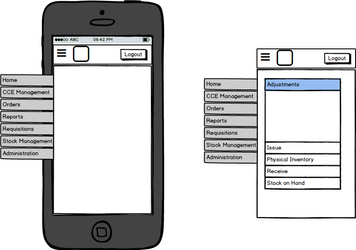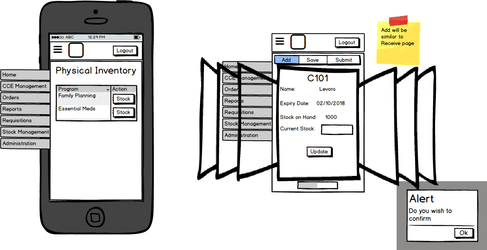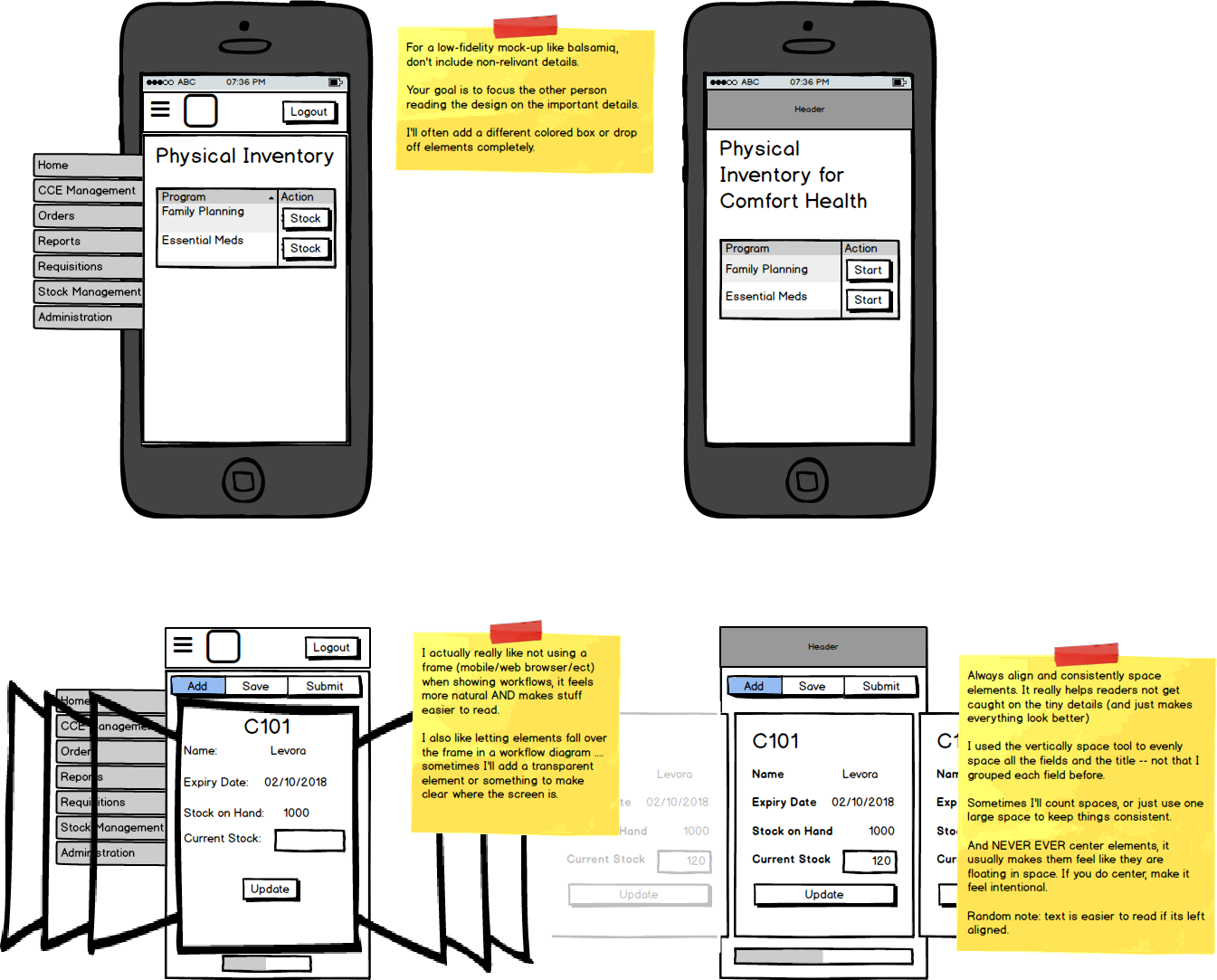Overview
Nikita and Protichi are proposing designs for modifying our stock management workflow to work on a cell phone.
Resources:
- Balsamiq Mock-ups
- Mock Ups (some mobile and some web applications - scroll to the bottom)
- [mFlow/HCMIS] mFlow VRF Processing / Issue (District to Facility) (more on mFlow)
To Do:
- Demo data (20 items)
- More depth in problem statement and user stories
Problem Statement
Stock clerks have the difficult task of tracking the inventory at a clinic. These clinics can range in size from a district hospital to a rural health outpost.
We have chosen to focus primarily on doing a physical inventory in the OpenLMIS system, and using that to refine the OpenLMIS-UI design to support mobile navigation and data entry.
9/17 Draft Feedback
The following feedback is from Nick Reid (Deactivated) and Alfred Mchau
Workflow Feedback
Home page I like the ideas that you included for the homepage – general web designer trick is to make the home page last, since they are usually political and hard | |
We like the navigation paradigm
| |
Physical Inventory
|
Design Feedback
This is more technical feedback about how to make a design, and is not relevant to feature development
Highlights:
- Focus on the text on the screen, and remove any unrelated text. Keep it simple and try to be realistic – it helps keep feedback focused on the design
- Align items ctrl+left/right arrow does a 'large' space in most design programs, its helpful for making accurate spacing quick (another trick is to adjust the sizes and positions using numerical input)
- Try to avoid colors other than white, light gray, and black text. Simple pallets keep feedback focused. We do use light blue and dark red as accents.


